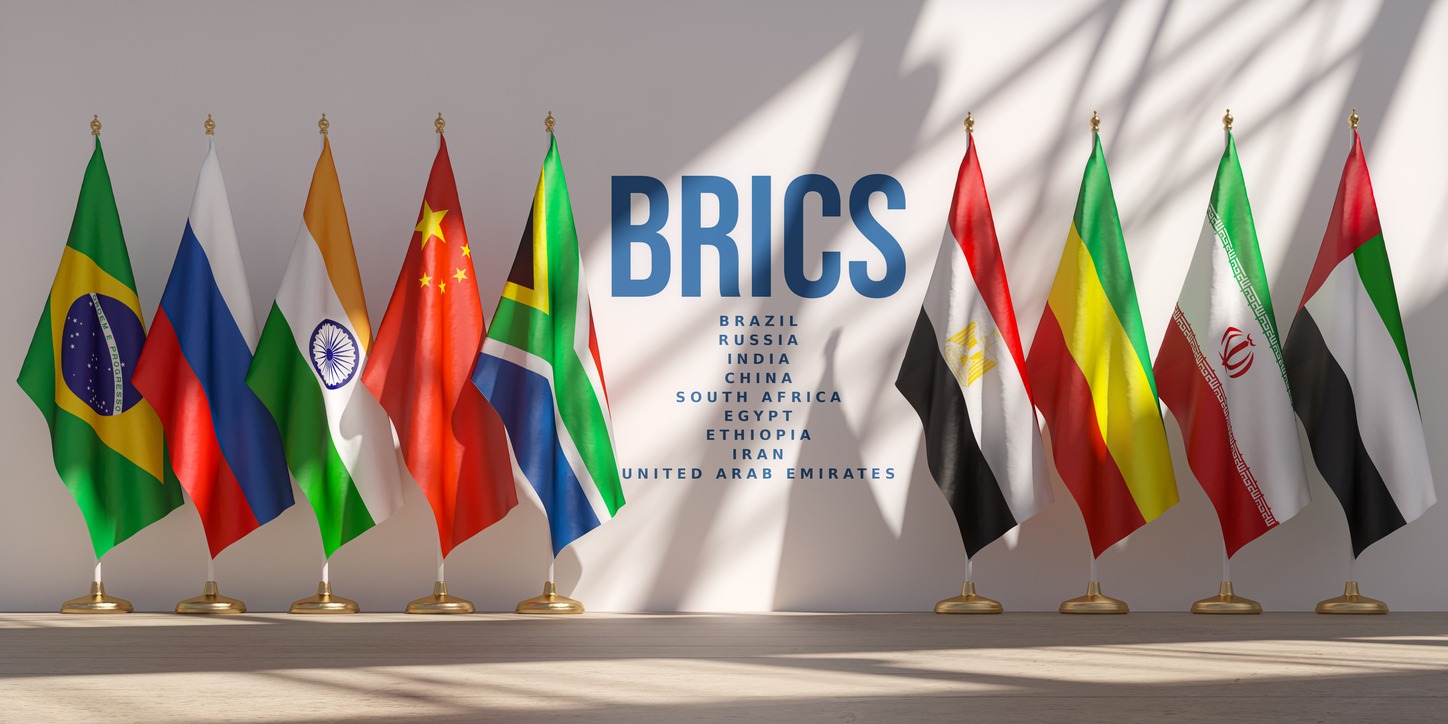The foreign exchange (Forex) market is witnessing subtle yet significant shifts as BRICS countries—Brazil, Russia, India, China, and South Africa—expand their initiatives to promote local currencies in international trade. These developments, especially after the addition of Egypt, Ethiopia, Iran, and the UAE in 2024, signal growing efforts to provide alternatives to the U.S. dollar in global transactions. While the U.S. dollar remains the world's most dominant reserve and transaction currency, BRICS proposals are presenting credible challenges that are beginning to reshape forex dynamics.
Together, the expanded BRICS bloc now represents over 45% of the global population and approximately 36% of global GDP (PPP), according to World Bank and IMF data. With this growing influence, BRICS nations are pushing forward with frameworks that could reduce dependency on the dollar, especially for intra-BRICS trade and transactions within the Global South.
The Dollar's Continued Strength, Yet Emerging Challenges
The U.S. dollar continues to dominate global finance, involved in approximately 88% of all global Forex trades, according to the Bank for International Settlements' 2022 Triennial Survey. It is still the primary currency in which commodities are priced and sovereign reserves are held. However, recent trends suggest that alternative currency arrangements are gaining ground.
Data from the IMF’s Currency Composition of Official Foreign Exchange Reserves (COFER) shows that while the dollar's share remains substantial, some central banks are gradually diversifying into other currencies. As of Q1 2025, the dollar comprised 58.36% of disclosed foreign reserves—down from over 70% two decades ago. This change is slow-moving but reflects growing interest in a more balanced reserve portfolio.
Much of this diversification stems from geopolitical considerations. U.S. sanctions on countries like Russia, Iran, and Venezuela have encouraged these nations—and their trading partners—to seek systems that bypass dollar-based settlements. Consequently, bilateral trade agreements using local currencies are increasing, especially among BRICS members.
Rise of Local Currency Settlements
A prominent example is the rupee-ruble payment mechanism India developed with Russia for energy trade. Similarly, China has significantly increased the use of the yuan in trade settlements, both within BRICS and with African and Southeast Asian nations. Russia’s reliance on the Chinese yuan has surged, with over 60% of its trade with China now settled in yuan, according to Bloomberg (May 2025).
Forex market behavior is adapting accordingly. Currency pairs involving BRICS currencies, like CNY/RUB or INR/ZAR, are seeing increased liquidity. Professional traders and institutions are fine-tuning their models to accommodate this shift. Some even rely on algorithmic tools like the xhmaster formula indicator to identify price action patterns and volatility behavior in emerging market currencies.
BRICS Initiatives: Currency and Digital Infrastructure
Rather than launching a single joint currency in the immediate term, BRICS nations are focusing on developing regional financial infrastructure to promote local currencies and digital payments. At the 2025 BRICS summit in Brazil, the member states raised the issue of interoperability between national systems, such as central bank digital currencies (CBDCs), and alternative settlement platforms.
Russia is spearheading one such initiative, BRICS Pay, with backing from China and Brazil. Based on blockchain and real-time payment networks, this system aims to facilitate fast and secure cross-border transactions without relying on the SWIFT network. According to the Bank of Russia, BRICS Pay is currently in the pilot phase, with technical integration tests underway in Brazil and India.
This digital infrastructure is designed not to replace SWIFT immediately but to provide resilience against future financial sanctions and enable members to settle trade independently of Western-dominated systems.
Forex Market Responses and Reserve Behavior
Forex trading platforms have recorded a notable uptick in BRICS-related currency volumes. Data from Refinitiv shows a 15% increase in trading activity involving BRICS currency pairs between Q3 2023 and Q2 2025. While G10 currencies still dominate overall trade, institutional investors are increasingly allocating resources to understand the fundamentals and technical indicators of these emerging markets.
Simultaneously, central banks in Asia, Africa, and the Middle East are adjusting their reserve compositions. Several countries—including Nigeria, Indonesia, and Malaysia—have begun increasing their gold and yuan holdings, reducing the proportion held in U.S. dollars. The yuan recently became the fourth most-used currency in global payments, overtaking the Japanese yen, according to the SWIFT RMB Tracker published in June 2025.
U.S. Policy Responses and Market Implications
The U.S. has responded to these developments with a mix of diplomacy and caution. While there has been no formal opposition to BRICS financial integration, concerns have been raised by U.S. policymakers about transparency and regulatory standards in new systems like BRICS Pay. Decentralization and a lack of regulatory oversight, according to Federal Reserve officials, could introduce systemic risks. Al's rhetoric has also escalated. During the 2024 U.S. presidential election campaign, Donald Trump criticized BRICS currency discussions and even proposed tariffs on countries. The promotion of alternatives to the dollar has sparked tensions. Despite the absence of such policies, the statements highlight Washington's attentiveness to challenges against the dollar-centric global order.
A Multipolar Currency Future?
While it is unlikely that any BRICS currency—or even a network of local currencies—will displace the U.S. dollar in the near term, the landscape is shifting toward a more multipolar currency environment. BRICS efforts are fostering a developing ecosystem that enables regional trade and digital transactions without immediate reliance on the dollar.
According to a June 2025 report by JPMorgan, the global reserve system is slowly evolving. The report notes that while the dollar’s dominance is unlikely to end, its share in reserves and trade settlements could continue to face gradual erosion if BRICS and other Global South nations maintain momentum in their currency integration efforts.
The coexistence of alternative systems, rather than the dollar's replacement, will define the future of Forex. As infrastructure matures and trust builds among BRICS and other regional blocs, Forex markets will likely become more dynamic, decentralized, and politically diverse.













